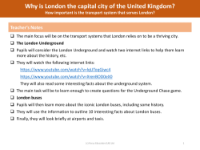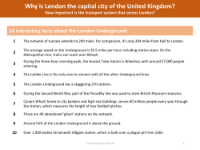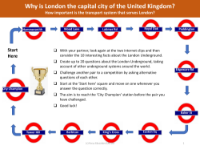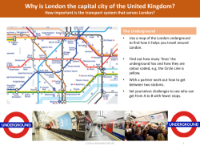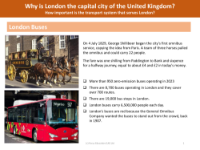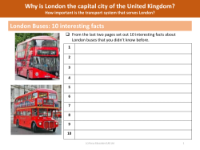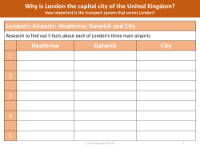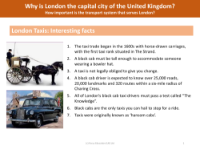Advantages and disadvantages of London modes of transport
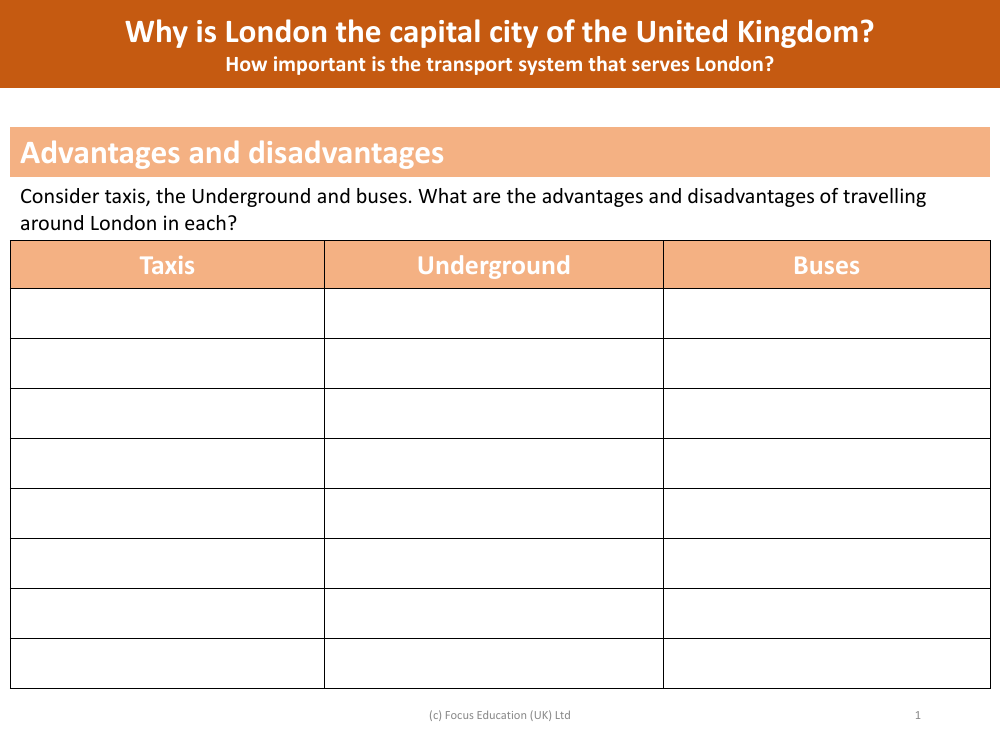
Geography Resource Description
Travelling around London can be done in various ways, each with its own set of advantages and disadvantages. Taxis offer the convenience of door-to-door service and the flexibility to travel at any time without the need for a schedule. However, they can be quite expensive, especially during peak hours, and may be subject to traffic delays. The Underground, or 'Tube', provides a fast and often efficient way to navigate the city, avoiding road traffic altogether. It covers a vast network, making many parts of London easily accessible. On the downside, it can become very crowded during rush hour, and there are often maintenance works that can disrupt travel plans.
Buses in London present an economical option with extensive coverage, including areas not serviced by the Tube. They offer scenic views of the city and have dedicated bus lanes to help mitigate traffic delays. Nevertheless, buses can still be affected by traffic congestion and can be slower than other modes of transport. Additionally, understanding the various routes and timetables may be daunting for some users. As the capital city of the United Kingdom, London's transport system is crucial in supporting its status as a major economic, cultural, and political centre. The efficiency and reach of London's transport are vital for the daily commute of millions, the flow of tourists, and the overall connectivity of the city's diverse neighbourhoods.

